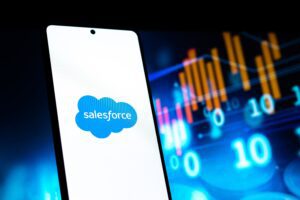People in marketing face mounting pressure to produce more content across an increasing number of advertising channels and formats.
An ad campaign that previously might have used 200 assets now uses 4,000, but the number of creative employees has, at best, stayed the same, said Dan Oros, CEO of AI-driven creative automation company Creatopy.
To address that problem, Creatopy raised $10 million in series A funding earlier this month to make it easier for marketers to create and personalize those 4,000 assets.
That was then
The Creatopy platform currently uses machine learning to resize and scale creative assets, meaning it can create hundreds of multisize formats from a single asset and hundreds of different templates from one template. Brands looking for visuals can import their branded assets or find images in a Shutterstock library.
Creatopy also builds a performance feedback loop for brands’ ad creatives where they can use the platform to serve ads on display networks like Google Display Network, then optimize those ads. Creatopy provides brands with a tag that tracks the performance of ads on the various networks, such as impressions and clicks.
Brands can A/B test different assets and change the creative in real time. “Let’s say it’s snowing over the weekend,” Oros said. “You can update your creative with snow to make it more contextual without needing to change the targeting or resetting it.”
Similarly, an ecommerce brand can create an ad that shows a discount for a certain product based on inventory availability, Oros said. Once the inventory dips low enough that it no longer makes sense to offer a discount, it can be removed without adjusting the campaign parameters.
Instead of competing with creative apps like Photoshop, Canva and Figma, Creatopy allows users to import downloaded designs from these programs into its platform. It’s also looking to create integrations with these apps so designers can directly send designs they created in, say, Figma to Creatopy.
And on the ad delivery side, Celtra and Bannerflow primarily serve enterprise clients, which doesn’t always overlap with Creatopy.
This is now
When large language models (LLMs) hit the scene last year, Creatopy realized it had a new tool to play with – and, arguably, new rivals in the AI-powered creative automation space that raised the bar for what customers expect from AI companies.
Creatopy will now bring in LLMs to add AI copywriting, image generation and editing features to the platform, according to Oros. The company is testing LLMs from OpenAI, Google and other open-source models to layer on top of its existing technology, which is all built in-house.
Once the new AI capabilities have launched, Oros said, brands can generate much more personalized creative. For instance, a brand’s newsletter could use the platform to create a unique visual for each subscriber based on information the customer provides, such as name, gender and hobbies.
Given the rapid pace of generative AI advancements, Creatopy is bent on using the money to have capabilities users have come to expect from AI, Oros said. On Thursday, for instance, Creatopy is introducing an AI tool that generates ads complete with a company logo, images and text based solely on the company’s URL.
The funding from 3VC and Point Nine, European venture capital groups that focus on B2B SaaS companies, is the previously bootstrapped Creatopy’s first external funding since it launched in February 2021.
And this is what will be
Aside from product development, Creatopy will use the funding to attract more customers. To expand its customer base, the creative automation platform plans to add more salespeople to its current headcount of about 70 employees.
At present, Creatopy works with about 5,000 brands and agencies. Most of its customers are brands, ranging from large companies like Salesforce, Autodesk, Zeiss and Yellowpages to SMBs to tech startups. It also counts a few hundred agencies among its customers as well, according to Oros.
Although Creatopy is raising money for AI-generated formats, it tries to solve for other challenges in creative workflow.
For example, its target clients include brands in highly regulated industries, like pharma and banking, that require more approvals in their workflows.
Creatopy also allows clients to create custom templates and apply specific disclaimers across all assets in keeping with their guidelines.
“There’s so much development in the AI space these days that it’s hard to say how it will look in the next two, three years,” Oros said. “How much of the creative will be AI-driven?”
Though impossible to predict, Creatopy is wagering that it will be a lot.




















